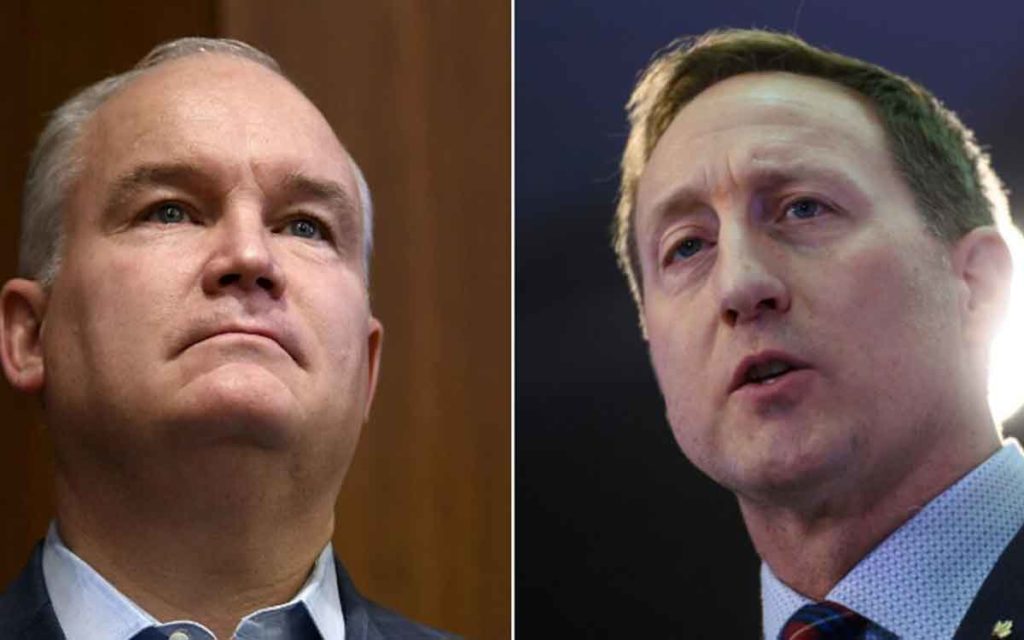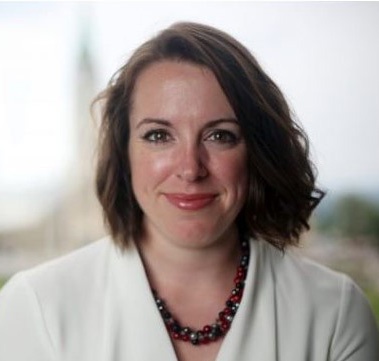
Conservative leadership hopefuls Erin O’Toole and Peter MacKay. Photos: The Canadian Press.
A global pandemic, record unemployment and ballooning debt are enough to make even the most tuned-in Tories forget about the big news happening within its own Party: the forthcoming Conservative leadership election. But even in the midst of a generational crisis, it’s hard to shake the feeling that the race would still be a snooze in the absence of these events.
Now that the leadership campaign has passed the all-important membership cutoff milestone, it’s time to take the race off auto-pilot, and move from boring to bold. Big ideas on substantive issues, not just reactionary policy, and a communicable plan of how to grow the Conservative Party are what’s desperately needed to give this campaign some signs of life.
The lull in activity isn’t entirely the fault of the candidates; coronavirus made it impossible for contenders to campaign in earnest, and the race was formally halted in the interest of avoiding group gatherings for events and fundraisers. Though campaigns were formally paused, most continued to focus on selling memberships before Friday’s cutoff, which leaves three months for candidates to convince both existing and new members to vote for them.
The four remaining candidates are likely to all claim victory for signing up the most new members in an attempt to manufacture momentum for their campaigns. While the real numbers won’t be known for some time, the air of excitement that accompanies the regeneration of a Party is notably absent in the race. The fact that many members still seem stuck on who isn’t running, rather than who is, remains a problem for the current crop of candidates. Process stories of social media screwups to mishandled emails aren’t inspiring for members who remain undecided as the vote closes in.
But in every challenge lies opportunity. The transition from courting membership sales to convincing members to vote could be the shot in the arm the race needs to get people saying the right things about the leadership election. With the prospect of an election a year (or less) away, now is the time for candidates to start talking about what they’d do in the top job, rather than simply saying they’d be better than the other three who are running.While leadership politics will always involve flexing conservative bonafides and playing to the base’s hatred of Justin Trudeau, the only thing stopping Conservative hopefuls from test-driving big ideas for a general election is their own creativity.
To the credit of campaigns, policy hasn’t been entirely absent from the race. The two front-runners in Peter MacKay and Erin O’Toole have had some shining moments in generating news, rather than just responding to it. Notably, MacKay was the first candidate to proactively state he would march in Toronto’s Pride Parade, while O’Toole made news with his proposals on how to effectively handle rail blockades. Both candidates have also been outspoken about Canada’s relationship with China, an issue that is top-of-mind for many Tory voters. How Canada ought to have responded to coronavirus in its early days was also handled thoughtfully by both camps.
But the big, bold ideas for a post-COVID Canada, and a forward-looking plan on how the Party will grow its thirty percent base haven’t been front-and-centre thus far. And what the candidates are talking about certainly isn’t translating into renewed interest in the movement, at least as far as public opinion data is concerned.
Growing the Party is the only thing that matters for many voters as time ticks closer to August vote. Conservatives are polling in single-digits in Quebec, and the Liberals hold a double-digit lead in parts of vote-rich Ontario, both of which will be needed for the Tories to pull off a win in the next campaign. While there’s still some time between now and the next election, why not test drive some ideas for how to bring young people, Francophones, new Canadians and suburban women into the Conservative fold?
The last campaign proved that crossing fingers and hoping people were as sick of Trudeau as most Conservatives won’t cut it. Nor will going back to the well-worn policies of the Harper government, which is a natural default position for both MacKay and O’Toole having both served in his majority government. While that prior experience matters, both are leaning heavy on the past as a reason why they ought to be the leader of tomorrow’s Conservative Party.
Tomorrow’s Conservative Party will have a lot to tackle: How can Conservatives message the importance of fiscal restraint with an electorate that’s comfortable with debt? How can we develop an all-in energy policy that supports Western oil and gas while dealing with Quebec’s aversion to it? What is the right way for conservatives to approach climate change, or pandemic preparedness, or our increasingly diminutive foreign policy? What is the Conservative solution for embracing innovation and the future of work, while supporting blue-collar workers in a transitioning economy?
These are big questions that need bold vision and ambition to be answered completely. Here’s hoping the next 90 days seems more time spent on future vision than settling scores between candidates.





















